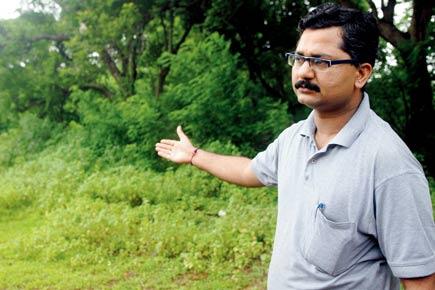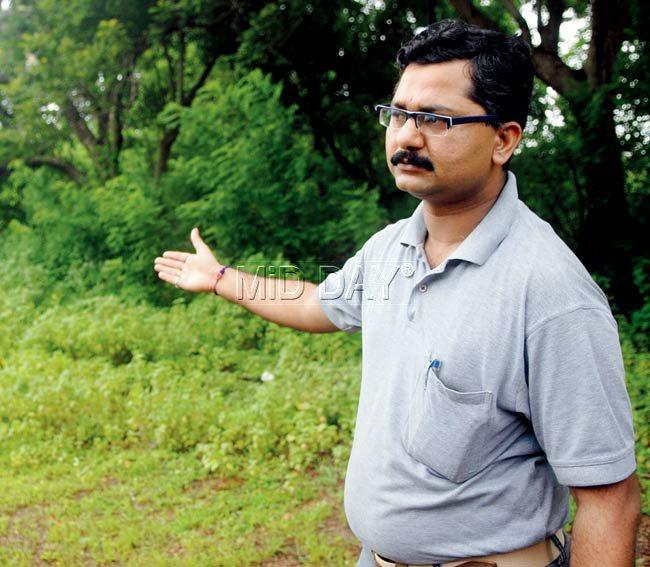Decision taken to boost food stock for animals like chital and sambar; work on converting a four-acre plot into grassland underway

An SGNP official points at a possible location that can be converted into a grassland.
IF everything goes as per the plan chalked out by forest authorities, then the Sanjay Gandhi National Park (SGNP) will soon have its own patches of grasslands for the herbivores inside the park.

An SGNP official points at a possible location that can be converted into a grassland. Pic/Pradeep Dhivar
ADVERTISEMENT
On a pilot basis, a four-acre plot is being converted into a grassland after ridding it of plants and bushes that are unhealthy for the herbivores. The plants will be replaced with varieties of grass. SGNP officials cleared that only those areas, where unwanted wild plants grow will be used for creating grassland without harming the existing ecology of the park.
Dr Gajanan Muratkar, member of Maharashtra State Biodiversity Board, said, “I have already visited the SGNP and surveyed a few locations. During my visit, I discovered that the percentage of grass is less as compared to other plants. This forces herbivores to migrate from one location to another in search of food. In order to increase the quantity of grass inside the SGNP, I have already prepared a management plan and submitted it to the Chief Conservator of Forests (CCF) and SGNP field director. There are wild aromatic plants that are not good for the digestion of herbivores. Such plants can be removed and replaced with grasses.”
An SGNP official said they were ridding the 4-acre plot of unwanted plants with the help of an NGO.
He added, “These plant restrict the growth of grasses which herbivores like chittal and sambar consume. The location for the grassland has been selected under the jurisdiction of Krishnagiri range.”
Another official added that there is also a plan to create a seed bank of grass on a 2-hectare plot and these seeds can be relocated to the areas selected for grasslands once they germinate.
“There are more than five types of wild legumes inside SGNP, which proves that it is a hotspot of biodiversity. Wild legumes have high protein content, which is good for the health of herbivores,” he said.
Wildlife experts said that if the amount of grassland is minimum up to six per cent in any forest, then it prevents the herbivores from migrating to areas outside the forest in search of food.
Besides creating grasslands inside the park, the forest department has plans to also increase the population of wild fruit trees so that after winter, when the grasslands dry-up, the herbivores have an option for the food.
 Subscribe today by clicking the link and stay updated with the latest news!" Click here!
Subscribe today by clicking the link and stay updated with the latest news!" Click here!







